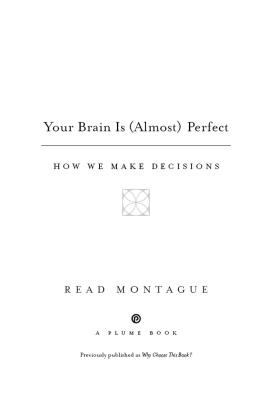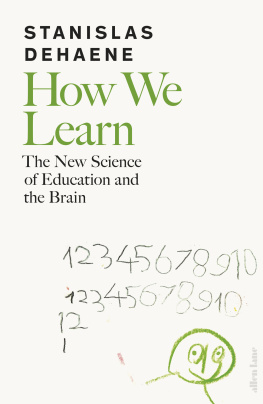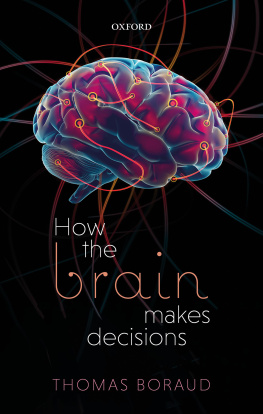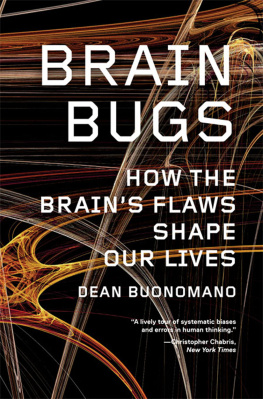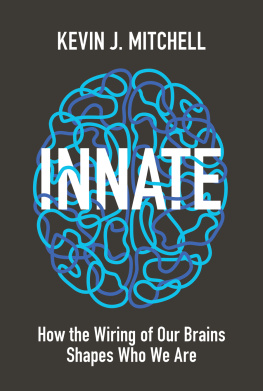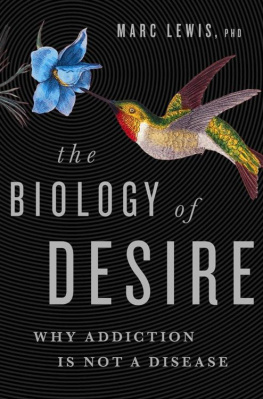WELL-GROUNDED
WELL-GROUNDED
The Neurobiology of Rational Decisions

KELLY LAMBERT


Published with assistance from the Mary Cady Tew Memorial Fund.
Copyright 2018 by Kelly Lambert.
All rights reserved.
This book may not be reproduced, in whole or in part, including illustrations, in any form (beyond that copying permitted by Sections 107 and 108 of the U.S. Copyright Law and except by reviewers for the public press), without written permission from the publishers.
Yale University Press books may be purchased in quantity for educational, business, or promotional use. For information, please e-mail (U.K. office).
Set in Janson type by Integrated Publishing Solutions, Grand Rapids, Michigan.
Printed in the United States of America.
Library of Congress Control Number: 2018936848
ISBN 978-0-300-20730-9 (hardcover : alk. paper)
A catalogue record for this book is available from the British Library.
This paper meets the requirements of ANSI/NISO Z39.48-1992 (Permanence of Paper).
10 9 8 7 6 5 4 3 2 1
To Dr. Craig Howard Kinsley (19542016)
Colleague, Friend, Knowledge Enthusiast
His passion for behavioral neuroscience continues to influence his former colleagues and students... it certainly continues to influence my thoughts about the wonders of the brain
Contents
1. The Brains Contingency Calculator: The Secret
of Our Success
10. Stretching the Contingency Limits: New and
Imagined Realities
Acknowledgments
T HE CONTENT IN THIS book is an amalgamation of the fascinating research of countless neuroscientists who have contributed to the scientific literature. Working in various contexts, these neuroscientists have provided the scientific information that serves as a backdrop for the evolving science of adaptive neuroscience and healthy brain functions. Because these science stories are complex and dynamic, I am indebted to the generosity of two giants in the field of behavioral neuroscience, Bryan Kolb (University of Lethbridge) and Don Stein (Emory University), for their informed and insightful comments. Although lingering mistakes will no doubt be found in this book, their comments were extremely valuable, saving me from unwanted detours and misinterpretations. John Salamone (University of Connecticut) also provided valuable feedback about specific neurochemical sections.
I am also indebted to multiple individuals for taking the time to allow me to interview them, including but not limited to: Penny Chenery, Judge Robert Francis, Judith Cochrane Gilman-Hines, Mike Lacey, Sheri Storm, and Kate Tweedy. My former and current undergraduate students, too many to name here, have also contributed to the scientific stories introduced throughout the chapters of this book. I have most certainly benefited from having the distinct honor of working with these students over the past three decades. I have also been fortunate to have worked with many amazing collaborators at several different institutions through the years. I received support from my former colleagues and staff in the Psychology and Biology Departments at Randolph-Macon College and, most recently, at the University of Richmond. The support I received from the Macon and Joan Brock Neuroscience Professorship, and the generous donations of Pepper and Stuart Laughon and others at Randolph-Macon College, contributed to the experiential capital necessary for this writing endeavor, as did research support from the National Institute of Mental Health and the National Science Foundation.
Not surprisingly, this book required me to work above and beyond my real job as a professor, and I thank my family for understanding the required long hours, especially during weekends, while working on this project. My daughters, Lara and Skylar, have accepted that their rat-and-brain-loving mother is a little different than other moms. My own brain has most certainly been enriched and restructured by having them in my life, and I have included a few of our adventures in this book! My very supportive husband, Gary, has spent countless hours listening to my various ideas about brain bubbles and contingency calculationshis insight and many editing sessions were critical for the development of this manuscript.
Finally, the transition of my ideas about distorted brain bubbles into an actual book is the result of my stellar colleagues in the world of publishing. I will always be indebted to Katherine Ellison, an accomplished author and valued friend, who convinced me years ago that I could write a book for mainstream audiencesgiving me the opportunity to extend my classroom to a larger audience. My agent, Michelle Tessler, has once again done a wonderful job of listening to my initial ideas and providing informed feedback necessary to transform those ideas into a viable proposal. My editor at Yale University Press, Jean Thomson Black, was extremely patient as I navigated my way through the many challenges of completing this neuroscience story, all the while providing support and valuable feedback to keep me working toward the finish line. Michael Deneen has had the difficult job of keeping the manuscript in the appropriate order and format in his role as an Editorial Assistant. I appreciate his professionalism and patience guiding me through this process.
Finally, I would be remiss if I neglected to acknowledge the core contributors to my own experiential capital. I am thankful for a minimally micromanaged childhood that allowed curiosity to guide my neural development in the backyards and backwoods of Alabama, as well as for family members who encouraged me to follow my passion to learn more about brains and behavior even though a career in higher education and academics was far from their perception of the norm. I am also grateful for many professors who, in addition to providing the building materials for my neuroscience career, planted the seeds of curiosity that continue to make neuroscience fascinating after all these years. As I submit this final draft manuscript, I am thinking about the most recent batch of beautifully stained neural tissue in my laboratoryand I cant wait to work with my wonderful postdoctoral fellow, Molly Kent, and my current student investigators to learn more about how the brain adapts to lifes many challenges.
Introduction
I N EIGHTEENTH-CENTURY G REAT B RITAIN, merchants were enthusiastic about a new opportunity to earn money. The South Sea Company was created by Parliament in 1711 to facilitate trading among the South Seas and parts of America. The appearance of financial markets during this time represented a new way for the brain to experience a return on investments. Whereas in the past, acquired resources were more closely tied to an investment of personal effort typically involving some form of physical labor, the new financial investments and market schemes seemed to bypass such work. Less work, more money: perfect! After several years the South Sea Company gained an impressive corporate presence, boasting a market capitalization that exceeded 200 million pounds.
Amid the apparent success of the South Sea Company, Archibald Hutcheson, an attentive lawyer and economist, spotted a potential problem, or bulge, as he called it. He warned investors that the valuations of the South Sea shares were unrealisticthat their intrinsic value was inflated. It turned out that Archibald was onto something. The irrational mania behind the South Sea Companys apparent success led to what was later described as an
Next page


